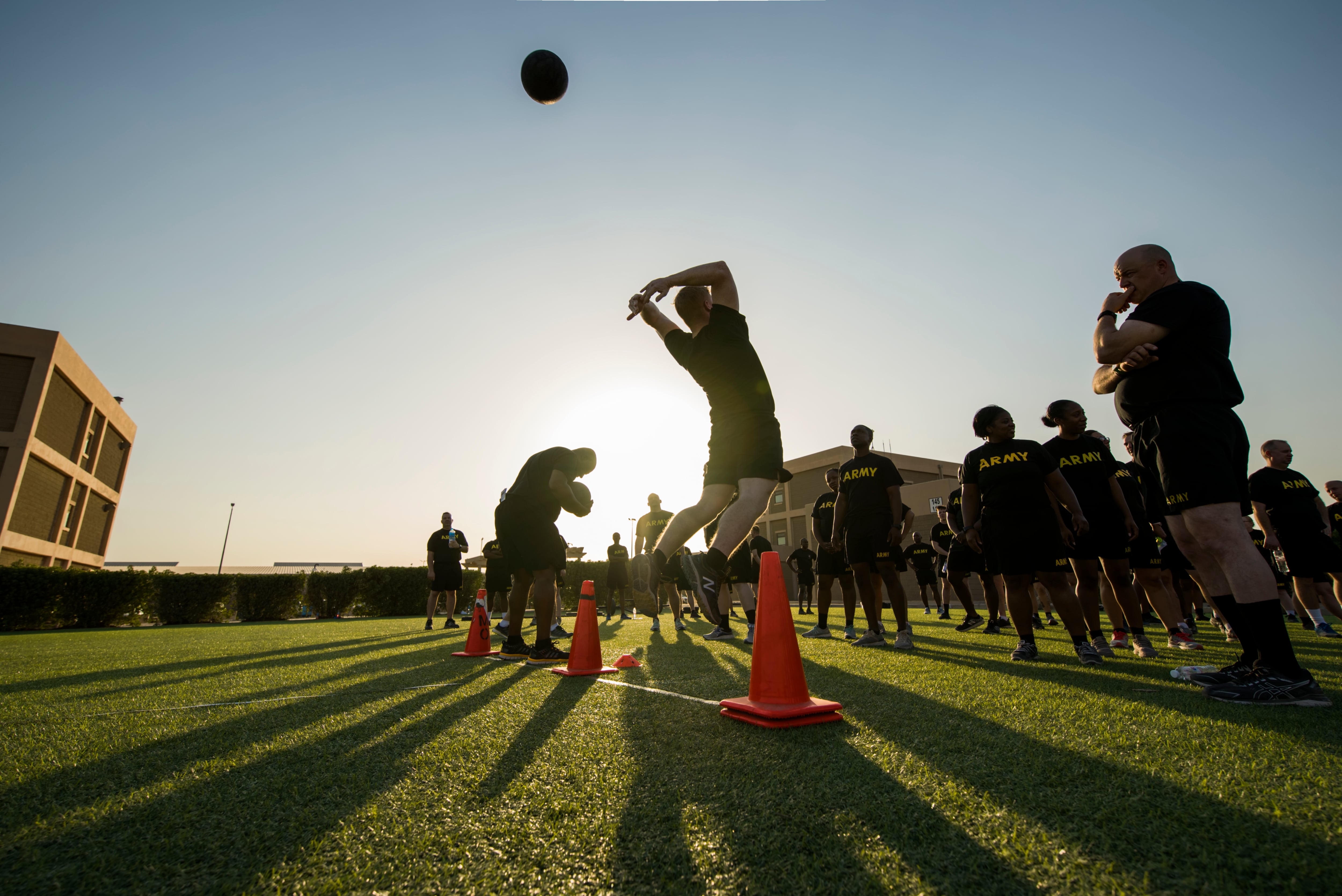The Army Combat Fitness Test (ACFT) represents a significant evolution in assessing the readiness of U.S. soldiers. Introduced after years of research, fielding and evaluation, this six-event test was designed to deliver a holistic assessment of a soldier’s physical fitness and their ability to meet the demands of combat. However, a recent change to this finely tuned test — the removal of the standing power throw — threatens to undermine its comprehensiveness and effectiveness.
From August 2011 until November 2024, I served as the director of research and analysis for the U.S. Army Center for Initial Military Training. My team developed and fielded the ACFT in its original form and assisted in the subsequent changes, though we were not consulted on the recent changes.
The standing power throw event challenges soldiers to hurl a 10-pound medicine ball backward over their head for distance. At first glance, it may seem less directly connected to battlefield tasks compared to test events like the deadlift or the sprint-drag-carry. This perception, however, stems from a misunderstanding of its purpose and value. The event evaluates explosive power, a crucial physical attribute for tasks ranging from close-quarters combat and scaling obstacles to transitioning quickly from prone positions.
Explosive power, while vital, is notoriously difficult to measure directly in practical and field-appropriate settings. This is where the standing power throw excels. As a simple, reliable and low-maintenance test, it not only measures explosive power but also integrates balance, coordination, flexibility, speed and agility — elements indispensable to soldier performance. No other fitness test element captures this combination as effectively or efficiently, particularly in a time-efficient manner requiring only seconds to complete.
The ACFT was designed as a field test, not a laboratory test, and to have the ability for minimally trained graders to measure test results. It achieved this very well.
Field tests like medicine ball throws are more practical for general power assessment due to minimal equipment needs. Backward overhead medicine ball throws, similar to the standing power throw, have high test-retest reliability when assessing power in athletes, according to a 2001 study published in the Journal of Sports Sciences. The study notes minimal equipment (a medicine ball and measuring tape) and quick administration, supporting simplicity and low-maintenance claims. A 2017 Study in the Journal of Applied Biomedical Research confirms medicine ball throws are reliable for upper- and lower-body power assessment, requiring less setup than force plate-based tests. Additionally a standing, stationary test is inherently safer to execute than a jumping test.
Critics of the standing power throw often argue it lacks “face validity,” or an immediately obvious connection to battlefield tasks. This perspective, however, reflects an overly simplistic understanding of testing methodology. Tasks like carrying kettlebells clearly mimic carrying ammunition cans, making their relevance apparent. Yet, not all effective test components must mirror real-world actions to be invaluable. The standing power throw draws upon principles of kinesiology to approximate the functional movements soldiers rely on daily — movements that demand synergy between force, speed and agility.
Medicine ball throws engage multiple muscle groups and require coordination of the kinetic chain (hips, core, shoulders), assessing balance and flexibility alongside power, according to a 2019 study in the Asian Journal of Sports Medicine. Such studies suggest the standing power throw tests a synergy of physical qualities. Effective fitness tests need not replicate real-world tasks to predict performance, as long as they measure underlying physical capacities (for example, power and coordination), studies have argued. The standing power throw’s focus on triple extension and power aligns with this principle, as noted in the 2019 book, “Testing and Evaluation of Strength and Power,” which emphasizes general movement patterns over task-specific mimicry.
Furthermore, removing the standing power throw leaves another critical gap in the test. This event is not merely one of six; it plays a vital role in creating a balanced evaluation of a soldier’s physical fitness. Reducing the test to five events risks omitting key data about a soldier’s capabilities and compromises the holistic approach that the test embodies. Added to the removal of the leg tuck for the plank, the initial 80% validity of the test may now be subject to question.
The ACFT’s development reflected the combined expertise of exercise physiologists, kinesiologists and military fitness experts, who recognized the need for a comprehensive and scientific approach to soldier fitness. Ignoring their expertise — and the years of research — by dismissing this key event is shortsighted. To enhance the Army’s readiness and maintain the integrity of our fitness evaluation system, we must defend the inclusion of the standing power throw. If we are serious about measuring a soldier’s core strength, perhaps the leg tuck — which was removed from the test in 2022 — should return for combat soldiers.
Removing the standing power throw is not progress — it’s a step backward. This event captures the essence of what made the ACFT revolutionary: its ability to evaluate soldiers holistically, bridging the gap between physical fitness and combat readiness. Let us ensure the Army’s fitness test remains a standard of excellence that reflects the demands of modern warfare.
Retired Col. Michael S. McGurk served 32 years in uniform and 13 years as the director of research and analysis for the U.S. Army Center for Initial Military Training. He retired in 2024. In 2024 he was the sole Army recipient for the highest civilian award in the DOD, the Defense Distinguished Civilian Service Award, based on his work with the ACFT and H2F.
The opinions expressed are his personal point of view and do not reflect official or Department of the Army policy.





